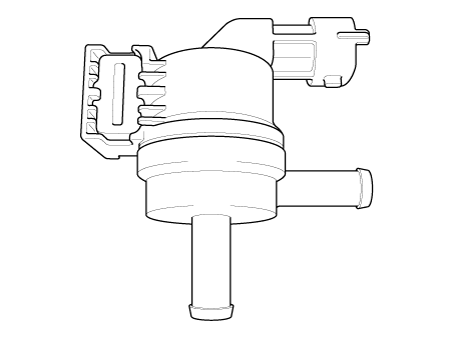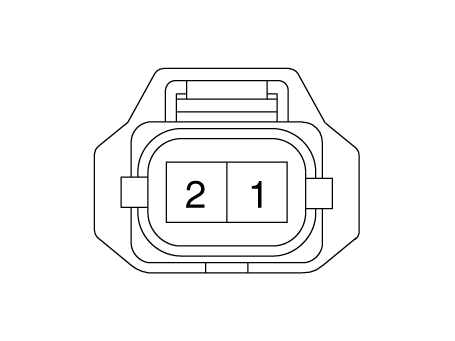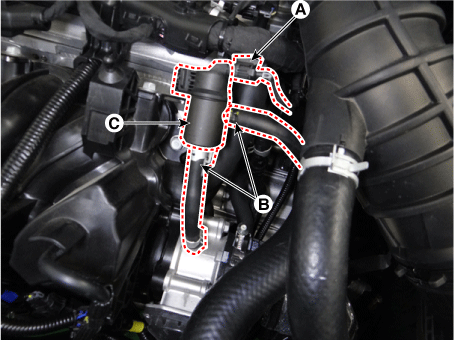Kia Forte: Engine Control System / Purge Control Solenoid Valve (PCSV)
Specifications
| Specification |
|
Item |
Specification |
|
Coil Resistance (Ω) |
18.5 - 22.5 [23°C(73.4°F)] |
Description and operation
| Description |
Purge Control Solenoid Valve (PCSV) is installed on the surge tank and controls the passage between the canister and the intake manifold. It is a solenoid valve and is open when the ECM grounds the valve control line. When the passage is open (PCSV ON), fuel vapor stored in the canister is transferred to the intake manifold.

Schematic diagrams
| Circuit Diagram |

Harness Connector

Repair procedures
| Inspection |
| 1. |
Turn the ignition switch OFF. |
| 2. |
Disconnect the PCSV connector. |
| 3. |
Measure resistance between the PCSV terminals 1 and 2. |
| 4. |
Check that the resistance is within the specification.
|
| Removal & Installation |
| 1. |
Turn the ignition switch OFF and disconnect the battery negative (-) terminal. |
| 2. |
Disconnect the purge control solenoid valve connector (A) and vapor hose (B). |
| 3. |
Remove the purge control solenoid valve (C).
|
| 4. |
Install in the reverse order of removal.
|
 Injector
Injector
Specifications
Specification
Item
Specification
Coil Resistance (Ω)
1.5 ± 0.075 [20°C(68°F)]
Description and oper ...
 CVVT Oil Control Valve (OCV)
CVVT Oil Control Valve (OCV)
Specifications
Specification
Item
Specification
Coil Resistance (Ω)
6.9 - 7.9 [20°C(68°F)]
Description and operati ...
Other information:
Kia Forte 2019-2025 (BD) Owners Manual: Transmission ranges
The indicator in the instrument cluster displays the shift lever position when the ignition switch is in the ON position. P (Park) Always come to a complete stop before shifting into P (Park). To shift from P (Park), you must depress firmly on the brake pedal and make sure your foot i ...
Kia Forte 2019-2025 (BD) Service Manual: Sunroof
Components and components location Component Location [4DR] 1. Sunroof 2. Sunroof switch 3. Sunroof motor & controller [5DR] 1. Sunroof 2. Sunroof switch 3. Sunroof motor & controller ...


